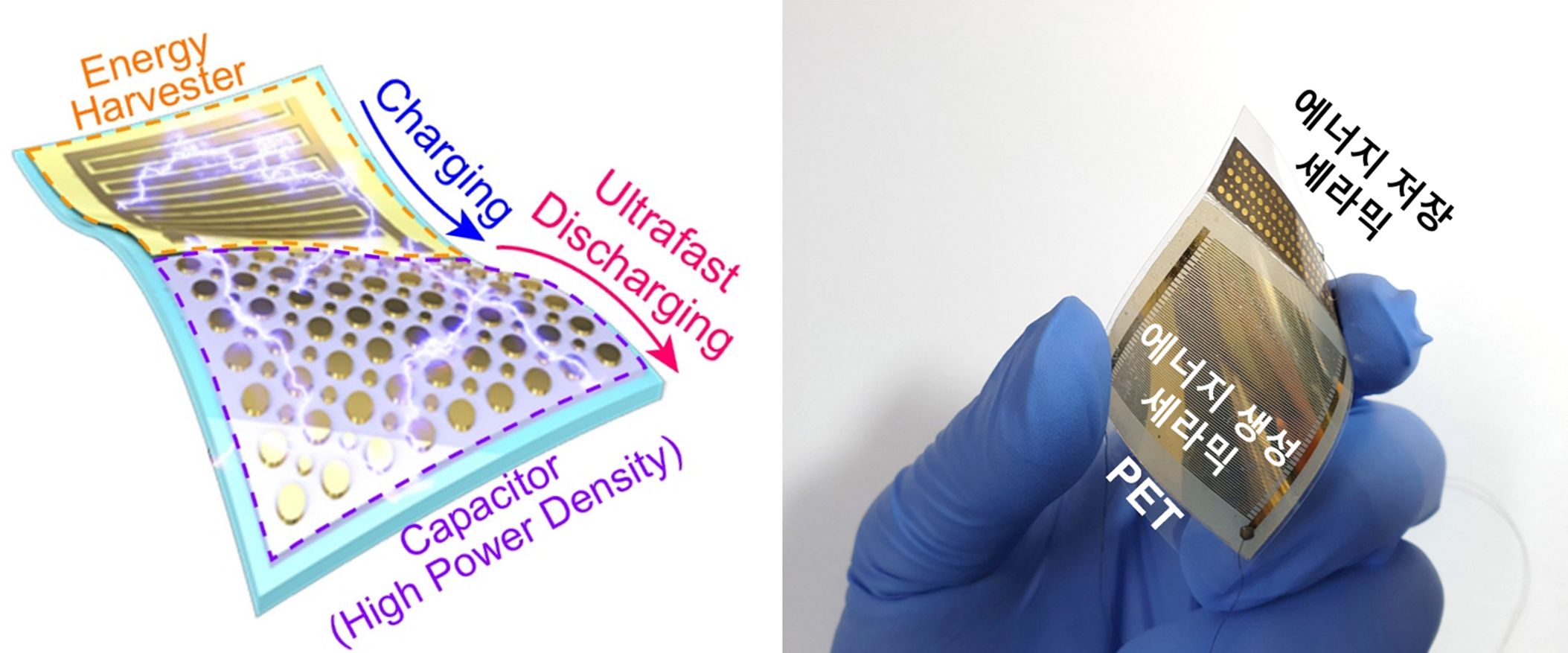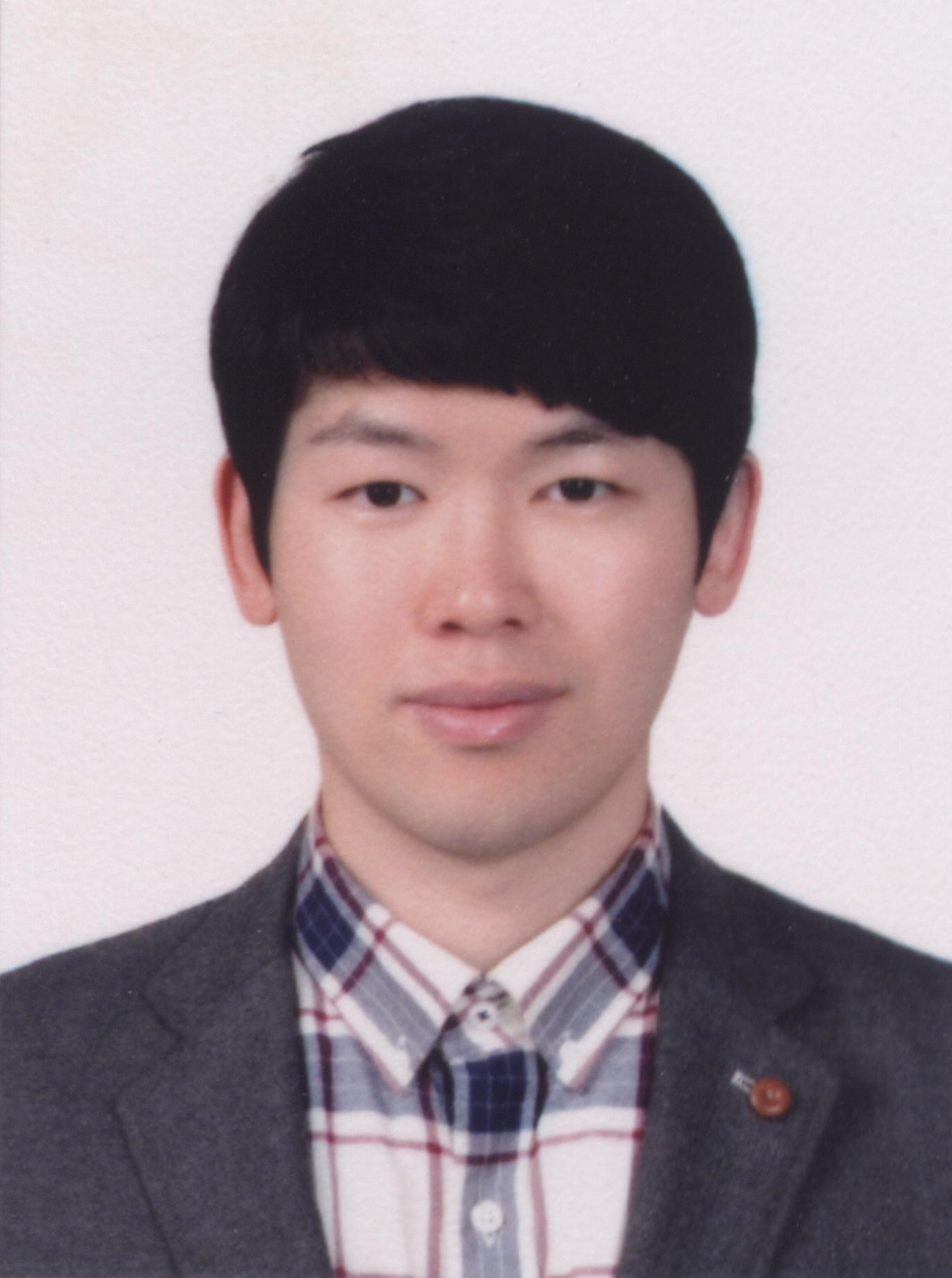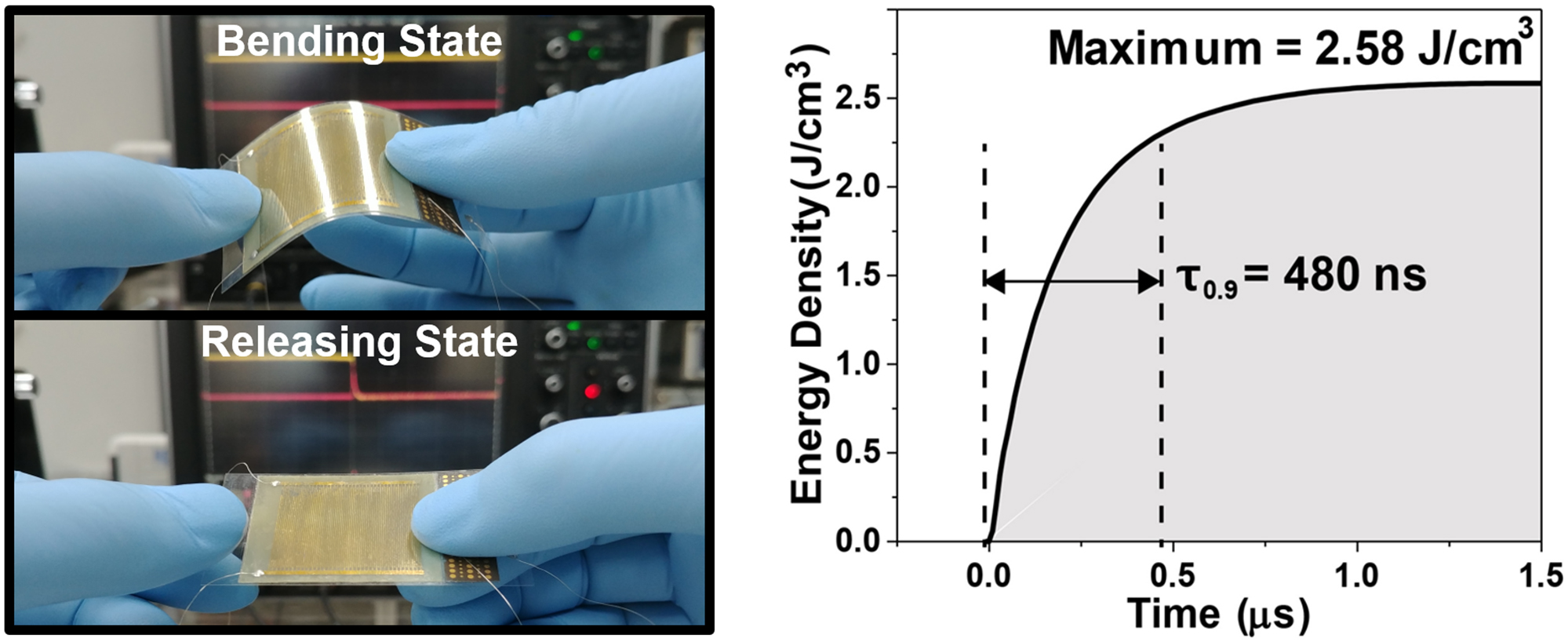커뮤니티
부경투데이
- 국립 부경대학교의 다양한 모습과 소식을 접하시면 부경대학교가 한번 더 가까워집니다.
| 신개념 에너지 소자 개발했다(Developed an advanced concept energy device) | |||
| 작성자 | 대외협력과 | 작성일 | 2021-08-03 |
| 조회수 | 821 | ||
| 신개념 에너지 소자 개발했다(Developed an advanced concept energy device) | |||||
 |
대외협력과 |  |
2021-08-03 |  |
821 |
몸속에서 스스로 전기 생산·저장하는 소자 개발 ‘주목’
- 부경대 황건태 교수팀 … 생체이식형 웨어러블 기기 실현 앞당겨

△ 자가충전형 유연 에너지 저장 소자의 모습
사람의 몸속에 심어 근육의 작은 움직임만으로 전기에너지를 만들고 저장할 수 있는 ‘자가충전형 유연 에너지 저장 소자’가 개발돼 주목받고 있다. 부경대학교 황건태 교수(재료공학과) 연구팀은 한국재료연구원 윤운하 박사팀, KAIST 이건재 교수팀, 영남대학교 류정호 교수팀, 금오공과대학교 박정환 교수팀과 공동으로 스스로 전기 에너지를 생산하고 저장까지 가능한 신개념 에너지 하베스팅 & 스토리지 일체형 소자를 개발했다고 3일 밝혔다.
부경대학교 황건태 교수(재료공학과) 연구팀은 한국재료연구원 윤운하 박사팀, KAIST 이건재 교수팀, 영남대학교 류정호 교수팀, 금오공과대학교 박정환 교수팀과 공동으로 스스로 전기 에너지를 생산하고 저장까지 가능한 신개념 에너지 하베스팅 & 스토리지 일체형 소자를 개발했다고 3일 밝혔다.
최근 주목받는 에너지 하베스팅은 우리 주변의 버려지는 에너지를 수집해 유용한 전기 에너지로 변환하는 신재생 에너지 기술이다.
연구팀은 이번 연구에서 근육의 작은 움직임으로 전기 에너지를 생산하고, 이것을 효과적으로 저장할 수 있는 세라믹 기반의 유연한 자가충전형 에너지 저장 시스템을 구현했다.
연구팀은 효과적인 에너지 저장을 위해 강유전 세라믹인 Pb(Mg1/3Nb2/3)O3·PbTiO3(PMN-PT)의 결정립을 나노미터(nm) 크기로 만들어 에너지 저장효율을 높이고, 저장된 에너지의 방출이 수백 나노초의 매우 짧은 시간 내 이루어질 수 있게 하는 데 성공했다.
이번에 개발된 시스템은 기존의 배터리와 비교해 월등히 높은 에너지 출력밀도를 달성함에 따라 순간적으로 큰 에너지가 필요한 생체이식형 심장 제세동기 등에도 응용될 수 있을 것으로 기대를 모은다.
특히 스마트 워치로 대표되는 웨어러블 기기는 향후 신체부착·생체이식형 기술로 진보할 것으로 예상되는데, 연구팀의 이번 기술을 활용하면 심박수 등 기본적인 건강상태를 실시간으로 관찰하는 스마트 헬스케어가 가능해질 전망이다.
웨어러블 기기의 전원공급을 위해 널리 사용되는 배터리는 용량 문제로 반복적인 충전이나 교체가 필요한 한계가 있는데, 이번에 연구팀이 개발한 자가충전형 에너지 저장 시스템은 얇고 쉽게 휘어지는 특성으로 웨어러블 기기에 적용하기 쉽고, 스스로 전기 에너지를 생산하고 저장할 수 있어 기존의 배터리를 대체 또는 보조할 수 있게 된 것이다.
이번 연구는 한국연구재단 등의 지원을 받아 진행됐으며, 연구성과를 담은 논문 ‘Flexible Self-Charging, Ultrafast, High-Power Density Ceramic Capacitor System’은 세계적 에너지 관련 학술지 <ACS Energy Letters>(IF: 23.1)에 최근 게재됐다.
한편 황건태 교수는 세계적 학술지 <Energy & Environmental Science>(IF: 38.5)에 교신저자로 논문을 게재하는 등 에너지 하베스팅 분야에서 활발히 연구를 진행하고 있다. <부경투데이>

△ 자가충전형 유연 에너지 저장 소자의 동작 모습(좌)과 소자에 저장된 전기 에너지의 방출 그래프(우)
Public attention to the development of a device that generates and stores electricity by itself in the human body
- The research team of Hwang Geon-Tae of PKNU plays a key role in accelerating the realization of bio-implantable wearable devices
A ‘self-chargeable flexible energy harvesting and storage device’ that can be planted in the human body to generate and store electrical energy with only small movements of muscles has been developed and is attracting public attention.
Pukyong National University announced on August 3rd that a research team led by Professor Hwang Geon-Tae (Dept. of Materials Engineering) at Pukyong National University has developed a new concept of energy harvesting & storage integrated device that can produce and store electrical energy by itself in collaboration with a team of Professor Yoon Woon-Ha of Korea Institute of Materials Science, Professor Lee Keon-Jae of KAIST, a team of Professor Ryu Jung-Ho of Yeungnam University, and Professor Park Jung-Hwan of Kumoh National Institute of Technology.
Energy harvesting, which has recently built up public attention, is a renewable energy technology that collects wasted energy around us and converts it into useful electrical energy.
In this study, his research team implemented a ceramic-based flexible self-charging energy storage system that can efficiently store electrical energy by producing electrical energy with small movements of muscles.
The research team improved energy storage efficiency by making nanometer (nm) grains of Pb(Mg1/3Nb2/3)O3·PbTiO3(PMN-PT), a ferroelectric ceramic, for effective energy storage and succeeded in allowing the release of stored energy to generate in several hundred nanoseconds.
As the system developed this time achieves a much higher energy output density compared to conventional batteries, it is expected that it can be applied to bio-implantable cardiac defibrillators that require a large amount of instantaneous energy.
In particular, wearable devices represented by smartwatches are expected to advance into body-attachable and bio-implantable technologies in the future, if the technology developed by the research team is well utilized, smart healthcare that monitors basic health conditions such as heart rate in real-time is expected to be possible.
Batteries widely used to power wearable devices have limitations in requiring repeated charging or replacement due to capacity problems. On the contrary, the self-charging energy storage system developed by the research team this time is thin and easily bendable, so it is easy to apply to wearable devices, and it can generate and store electric energy by itself, making it possible to replace or supplement existing batteries.
The research was carried out with support from the National Research Foundation of Korea, and the paper 'Flexible Self-Charging, Ultrafast, High-Power Density Ceramic Capacitor System' containing the research results was published in <ACS Energy Letters> (IF: 23.1), a global energy-related journal recently.
Meanwhile, Professor Hwang Geon-Tae is actively conducting research in the field of energy harvesting by publishing his thesis as a corresponding author in the international academic journal <Energy & Environmental Science> (IF: 38.5). <Pukyong Today>